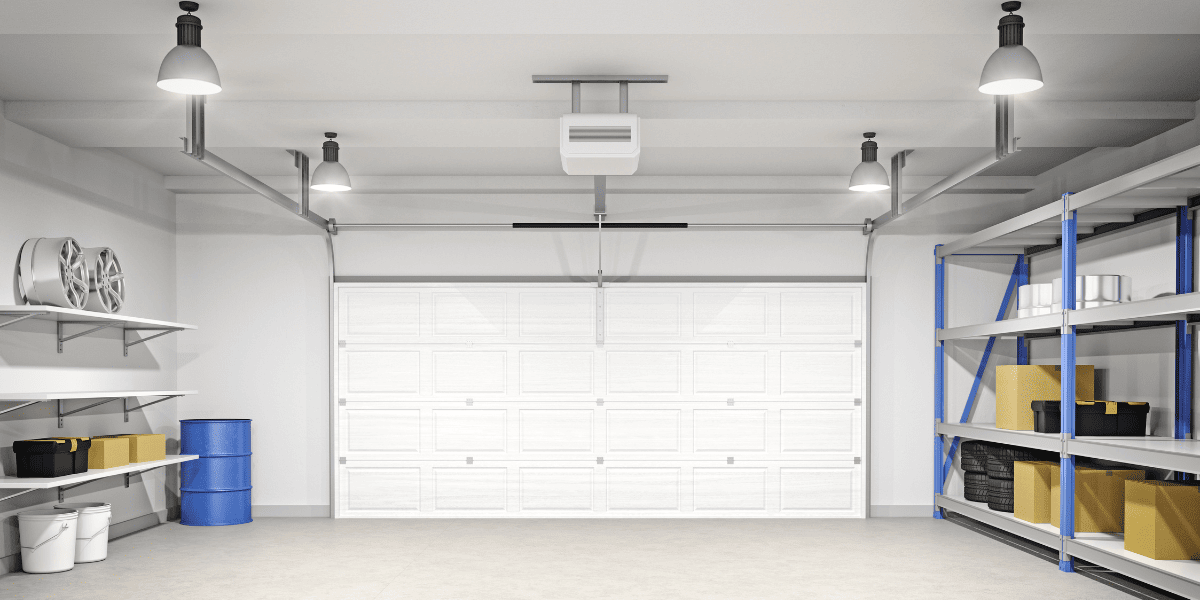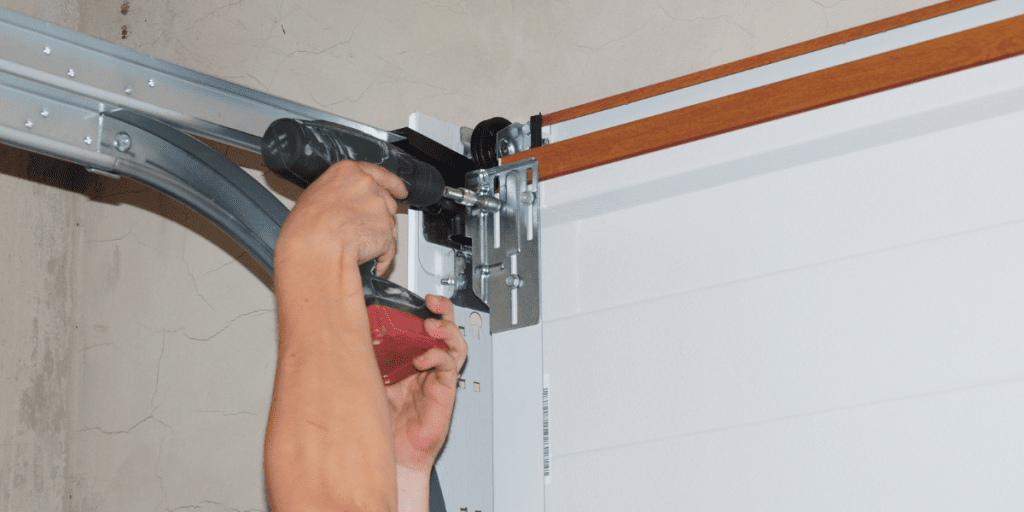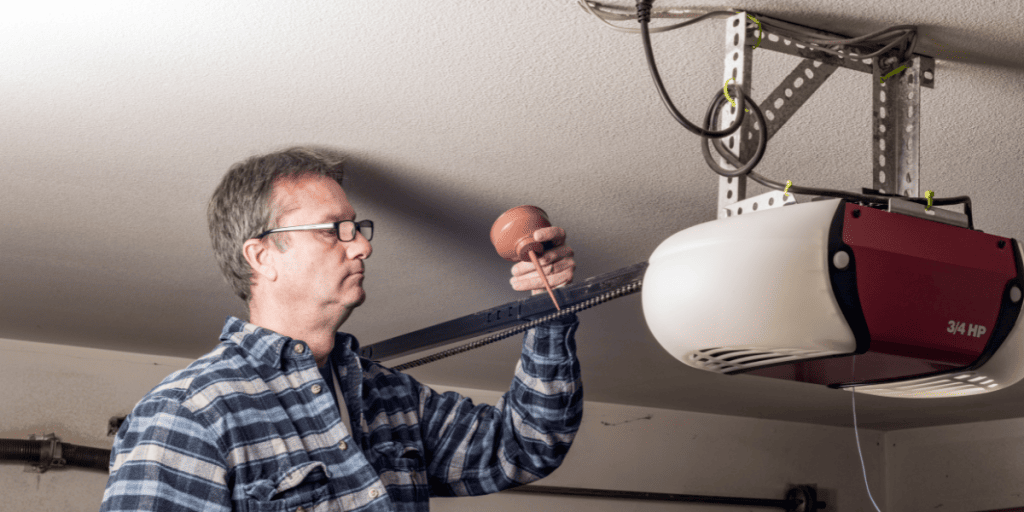Essential Tips for Seasonal Garage Door Care and Readiness
Preparing Your Garage Door for Each Season: Best Practices and Advice
Your garage door is more than just a functional entry point to your home; it plays a crucial role in protecting your belongings, vehicles, and enhancing your property’s curb appeal. With each changing season, your garage door faces different challenges, such as extreme temperatures, moisture, and potential damage from various environmental factors. Therefore, it is essential to understand the importance of seasonal garage door care to ensure its longevity and optimal performance.
During winter, cold temperatures and snow can cause the door’s components to contract and freeze, leading to operational issues and potential damage. Spring brings rain and fluctuating temperatures, which might result in rust and wear on the door’s mechanisms. Summer’s scorching heat can cause the door’s materials to expand and weaken, while fall brings falling leaves and debris that can clog and obstruct the garage door’s tracks.
In this blog post, we will guide you through the essential steps of seasonal garage door care, covering each season’s unique challenges. You will find practical tips and advice on how to maintain your garage door and ensure its optimal performance year-round.
Spring Garage Door Care
Inspection of Hardware and Moving Parts
Regularly inspecting the hardware and moving parts of your garage door is crucial to ensure its proper functioning and longevity. Here are some essential steps to take during the inspection:
- Tightening Loose Screws and Bolts: Over time, the constant movement of the garage door can cause screws and bolts to become loose. Loose hardware can lead to misalignment and put unnecessary strain on other components. Inspect all visible screws, nuts, and bolts and tighten them as needed to keep everything securely in place.
- Lubricating Hinges, Rollers, and Tracks: Proper lubrication is essential to reduce friction and wear on moving parts. Use a silicone-based lubricant to coat the hinges, rollers, and tracks of the garage door. Avoid using oil-based lubricants as they can attract dust and dirt, which may impede the smooth operation of the door.
Checking and Adjusting Spring Tension
The springs are a critical component of your garage door, as they bear the weight of the door and assist in its movement. Incorrect spring tension can lead to various problems, such as uneven door movement or a door that doesn’t open or close properly. Here’s how to check and adjust the spring tension:
- Safety Precaution: Dealing with garage door springs can be dangerous. If you’re unsure about handling this task, it’s best to call a professional garage door technician.
- Extension Springs: If your garage door has extension springs, check for signs of wear or damage. Adjust the tension by moving the S-hook to a different hole in the bracket attached to the track hanger. This will increase or decrease the spring tension as needed.
- Torsion Springs: Torsion springs are located above the garage door and require specific tools and expertise to adjust properly. It’s highly recommended to seek professional assistance for adjusting torsion springs.
Testing Auto-Reverse Mechanism and Safety Features
Modern garage doors are equipped with auto-reverse mechanisms to prevent accidents and injuries. To test this feature:
- Place a 2×4 piece of wood or a similar object on the ground, where the garage door closes.
- Close the garage door using the wall-mounted or remote opener.
- When the door comes into contact with the object, it should automatically reverse and open back up.
- If the auto-reverse feature is not working correctly, you must get it fixed immediately to ensure the safety of pets, children, and other family members.
Cleaning and Organizing the Garage Space
A well-maintained garage not only prolongs the life of your garage door but also provides a safer and more organized space for your belongings. Here are some tips for cleaning and organizing your garage:
- Remove Clutter: Get rid of unnecessary items and clutter that may be obstructing the garage door’s movement or safety sensors. Consider donating or disposing of items you no longer need.
- Regular Cleaning: Sweep the garage floor regularly to remove dirt, debris, and leaves. Wipe down the garage door, both inside and outside, to keep it free from dust and grime.
- Organize Belongings: Utilize shelves, cabinets, and storage systems to organize your belongings efficiently. Keep frequently used items easily accessible and store seasonal items out of the way.
Summer Garage Door Care
Checking and Maintaining Weather Stripping
Weather stripping is essential for keeping your garage protected from the elements and preventing drafts. During the summer, extreme heat and sunlight can cause weather stripping to deteriorate faster. Here’s what you can do to maintain it:
- Visual Inspection: Begin by inspecting the weather stripping around the garage door. Look for any signs of wear, cracking, or damage. Replace any damaged sections promptly to ensure a tight seal.
- Clean Regularly: Dust, debris, and insects can accumulate on the weather stripping over time. Clean it regularly using a mild detergent and a soft brush. Avoid using harsh chemicals that may damage the material.
- Apply Lubricant: Applying a silicone-based lubricant to the weather stripping can help keep it supple and prevent it from becoming brittle. This ensures a proper seal when the door is closed.
Cleaning the Garage Door and Exterior Surfaces
Regular cleaning of your garage door and its exterior surfaces not only enhances the curb appeal of your home but also helps maintain the door’s integrity. Here are some steps to follow:
- Rinse with Water: Use a hose to rinse off any loose dirt and debris from the garage door and surrounding areas.
- Gentle Cleaning Solution: Mix a mild detergent or car wash soap with water. Use a soft cloth or sponge to gently scrub the garage door surface. Avoid abrasive materials that could scratch or damage the door’s finish.
- Rinse and Dry: After scrubbing, rinse the door thoroughly with clean water. Dry the surface with a soft towel or let it air dry.
- Address Stains Promptly: If you notice any stains from oil, grease, or other substances, try to address them immediately. Use an appropriate cleaner or degreaser, and avoid using harsh chemicals that may harm the door.
Inspecting and Cleaning Photo-Eye Sensors
The photo-eye sensors are a critical safety feature of modern garage door systems. They detect obstructions and prevent the door from closing on objects or people. Keep them clean and well-maintained to ensure their proper functioning:
- Visual Inspection: Inspect the photo-eye sensors for any dirt, dust, or obstructions. Ensure that they are properly aligned and not damaged.
- Clean the Lenses: Use a soft, clean cloth to wipe the lenses of the sensors. Be gentle to avoid scratching the surface.
- Check Alignment: If the door is not closing or is reversing unexpectedly, it could be due to misaligned sensors. Adjust them carefully so that they face each other directly and maintain a solid connection.
- Test the Safety Feature: Regularly test the photo-eye sensors by placing an object in their path while the door is closing. The door should reverse immediately upon detecting the obstruction.
Lubricating Moving Parts to Prevent Rusting
Garage doors have various moving parts such as rollers, hinges, springs, and tracks. Lubricating these components helps reduce friction, minimize wear and tear, and prevent rust:
- Silicone-Based Lubricant: Use a silicone-based lubricant or garage door-specific lubricant to grease the moving parts. Avoid using WD-40 or other oil-based lubricants, as they can attract dirt and cause buildup.
- Apply Lubricant Carefully: Apply the lubricant sparingly and directly to the moving parts. Wipe off any excess to prevent dripping.
- Focus on Springs and Rollers: Pay special attention to the springs and rollers, as they are crucial for the door’s smooth operation. Lubricate them regularly, but be cautious with the springs, as they are under high tension.
Fall Garage Door Care
As the fall season approaches, it’s essential to perform some maintenance tasks on your garage door to ensure its smooth operation during the colder months ahead. Here are some important steps to take:
Clearing leaves and debris from tracks and sensors
During the fall, leaves, dirt, and other debris can accumulate on the garage door tracks and around the sensors. This buildup can hinder the door’s movement and even interfere with the sensor’s proper functioning. Regularly inspect and clean the tracks to remove any obstructions. Also, ensure that the sensors are free from any debris that might affect their ability to detect obstacles and prevent accidents.
Cleaning and inspecting weather stripping for wear
The weather stripping on your garage door serves as a barrier against drafts, moisture, and pests. Over time, it can become worn, cracked, or damaged. Inspect the weather stripping around the edges of the door and the bottom seal to check for signs of wear. If you notice any issues, replace the weather stripping to maintain proper insulation and protect the contents of your garage from the elements.
Checking and adjusting garage door balance
A balanced garage door is crucial for its smooth and efficient operation. An unbalanced door can put unnecessary strain on the motor and other components, potentially leading to malfunctions and premature wear. To check the balance, disconnect the automatic opener (if applicable) and manually lift the door halfway. If it stays in position, the balance is fine. If it moves up or down, you may need to adjust the tension on the springs or seek professional assistance to correct the balance.
Preparing the garage for colder temperatures
Fall often brings cooler temperatures, and your garage might need some adjustments to handle the changing weather. Consider the following:
- Lubricate moving parts: Cold weather can cause metal components to contract, leading to potential squeaks and resistance. Lubricate the hinges, rollers, and springs with a silicone-based lubricant to keep the door running smoothly.
- Insulate the garage: If your garage is not adequately insulated, it can lead to heat loss, making the space uncomfortable and increasing your energy bills. Consider adding insulation to the walls and the garage door to maintain a more stable temperature inside.
- Check the battery in your opener’s remote: Cold weather can weaken batteries, so before winter sets in, ensure the batteries in your remote and the keypad are fresh and in good condition.
- Inspect and repair the garage door seals: The seals around the door frame and at the bottom are crucial for keeping cold air, rain, and snow out of the garage. Inspect them for any damage and replace as needed.
Winter Garage Door Care
Lubricating moving parts with low-temperature grease
During the winter months, garage door components may be more prone to stiffening or freezing due to low temperatures. To prevent this and ensure smooth operation, it’s essential to lubricate the moving parts with low-temperature grease. Common components to lubricate include hinges, rollers, springs, and tracks. This will help reduce friction and wear on these parts, making the garage door function properly even in cold weather. Remember to use a lubricant specifically designed for low temperatures to ensure optimal performance.
Insulating the garage for energy efficiency
A well-insulated garage can make a significant difference in maintaining a comfortable temperature inside the space and potentially reduce energy costs. During winter, cold air can seep into the garage and make it harder to keep the adjacent living areas warm. By insulating the garage walls and door, you can create a barrier against the cold. This can be done using various materials such as foam board insulation, reflective insulation, or even weatherstripping around the garage door. Additionally, insulating the garage can protect the moving parts of the garage door from extreme cold, helping to prolong their lifespan.
Clearing snow and ice from the garage door and surrounding areas
Snow and ice buildup can cause several issues with your garage door during winter. Excessive snow on the door or around the tracks can prevent the door from opening or closing properly. In freezing temperatures, any moisture or water can turn into ice, leading to the garage door becoming stuck. To prevent these problems, regularly clear snow and ice from the garage door and its surrounding areas. Use a snow shovel or a broom to remove snow from the door’s surface and make sure the tracks are free from any obstructions. Be cautious not to damage the door or its components while removing the snow.
Testing and maintaining battery backup for the opener
During winter, power outages are not uncommon due to storms or extreme weather conditions. If your garage door opener relies on electricity, a power outage could leave you stranded with a closed garage door. To avoid this inconvenience, test and maintain the battery backup for the garage door opener. Most modern garage door openers come with battery backup options. Regularly check the battery’s condition, and if it’s rechargeable, ensure it’s charged adequately. If the battery is not working correctly, replace it promptly to ensure the garage door remains functional during power interruptions.
Year-Round Garage Door Maintenance
Regular Visual Inspections
Regular visual inspections of your garage door are essential to identify any potential issues early on and prevent them from developing into major problems. These inspections can be conducted by the homeowners themselves on a monthly basis. Here are some key points to focus on during these inspections:
- Check for Damaged Parts: Inspect the door’s components, including springs, cables, rollers, hinges, and tracks, for signs of wear, damage, or rust. Replace any damaged parts immediately to avoid safety hazards and ensure smooth operation.
- Observe Unusual Noises: Listen for any strange or excessive noises while operating the garage door. Unusual sounds may indicate issues with the opener or other mechanical components.
- Test Balance and Alignment: Manually test the balance of the garage door by disconnecting it from the automatic opener and lifting it halfway. If it doesn’t stay in place, it may be unbalanced, requiring adjustment. Additionally, check the door’s alignment to ensure it moves smoothly along the tracks.
- Inspect Weather Stripping: Examine the weather stripping around the perimeter of the door to ensure it is intact and providing a good seal. Damaged weather stripping can lead to energy loss and allow debris and pests to enter the garage.
Scheduling Professional Tune-Ups
While regular visual inspections are vital, it’s also important to schedule professional tune-ups at least once a year. Hiring a certified garage door technician ensures a thorough examination of all components and the implementation of necessary maintenance tasks, such as:
- Lubrication: Proper lubrication of moving parts like rollers, hinges, and tracks helps reduce friction and wear, enhancing the door’s performance and lifespan.
- Spring Adjustment: Garage door springs can lose tension over time, affecting the door’s balance and causing strain on the opener. A professional can adjust the springs to ensure they are functioning correctly.
- Opener Inspection: The garage door opener will be checked for any signs of wear, electrical issues, or safety concerns. The technician can adjust the opener’s settings if necessary and test the safety features.
Considering Seasonal Changes and Their Impact on the Garage Door
Different seasons can have varying effects on your garage door, so it’s essential to consider these changes and take appropriate measures:
- Winter: In cold climates, freezing temperatures can cause the garage door mechanisms to contract and stiffen, leading to potential operational problems. Applying a silicone-based lubricant to the moving parts can help maintain smooth operation during winter.
- Summer: High temperatures can also affect the garage door, causing materials to expand. Ensure proper lubrication and examine the weather stripping to prevent hot air from entering the garage.
- Rainy Seasons: During periods of heavy rain, it’s crucial to inspect the garage door for any leaks or water intrusion. Proper sealing and weather stripping maintenance can help keep the garage dry.
Understanding the Owner’s Manual and Recommended Care
The owner’s manual provided by the garage door manufacturer contains valuable information about proper usage, maintenance, and safety guidelines. Familiarize yourself with the manual to understand the specific needs of your garage door model. Some key points to consider include:
- Maintenance Schedule: The manual may suggest a maintenance schedule specific to your garage door, so be sure to follow these recommendations.
- Limitations: Understand the weight limits and load capacity of your garage door to avoid overloading it, which could lead to premature wear or even accidents.
- Safety Features: Learn about the safety features of your garage door, such as the emergency release mechanism, and test them regularly to ensure they are functioning correctly.
Frequently Asked Questions
Why is seasonal garage door care important?
Seasonal garage door care is vital to maintain the door’s performance, longevity, and safety. Extreme weather conditions throughout the year can cause wear and tear, so regular maintenance ensures the door operates smoothly and minimizes the risk of costly repairs.
How often should I perform seasonal maintenance on my garage door?
It’s recommended to perform seasonal garage door maintenance at least twice a year – once before winter and once before summer. This allows you to address any potential issues before they become more severe during harsh weather conditions.
What are the essential steps for seasonal garage door care?
- Inspect the door and its components for visible signs of damage or wear.
- Lubricate all moving parts, such as hinges, rollers, and tracks, to reduce friction and noise.
- Tighten any loose screws, nuts, or bolts in the garage door system.
- Check the balance of the door and adjust the springs if necessary.
- Test the safety features, such as the auto-reverse mechanism, to ensure they’re functioning correctly.
- Clean the tracks and remove any debris that might be obstructing the door’s movement.
How do I know if my garage door springs need adjustment or replacement?
If your garage door has difficulty opening or closing smoothly, makes loud noises during operation, or shows visible signs of wear on the springs, they may need adjustment or replacement. Springs are under high tension, so it’s best to leave this task to a professional garage door technician.
Can I perform garage door maintenance myself, or should I hire a professional?
Some basic maintenance tasks, like cleaning and lubricating, can be done by homeowners. However, more complex tasks, such as adjusting springs, should be left to professionals. Professional technicians have the necessary expertise and tools to handle garage door maintenance safely and effectively.
Conclusion
In conclusion, caring for your garage door seasonally is of paramount importance for the overall functionality and longevity of this essential home component. Throughout the year, your garage door is exposed to various weather conditions, temperature fluctuations, and general wear and tear, which can lead to potential issues if left unchecked. By implementing a seasonal maintenance routine, you can address minor problems before they escalate into major, costly repairs.
Seasonal garage door care involves inspecting the various components, such as the springs, cables, rollers, hinges, and tracks, to ensure they are in good condition. Lubricating moving parts regularly helps reduce friction and noise, contributing to smooth operation. Additionally, checking and adjusting the balance and alignment of the door helps prevent unnecessary strain on the opener and ensures the door operates safely and efficiently.



